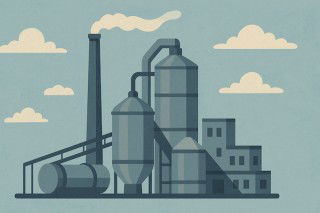Local cement producers are in the enviable position of having to scramble to keep up with the pace of growth in demand for their product.
The R372bn state infrastructure development programme boom in the building and construction industry and the 2010 Soccer World Cup have forced local companies to ramp up capacity.
Estimates are that growth in the construction industry, which has fuelled an almost 50% increase in cement demand, will continue until at least 2014.
Cement sales in the local market, which includes sales to Lesotho, Botswana, Namibia and Swaziland, increased 11% last year, according to the Cement and Concrete Institute.
Faced with inadequate output, major producers have had to resort to imports.
Pretoria Portland Cement (PPC), SA’s largest cement producer, joined competitors such as Lafarge and Holcim last month in announcing plans to start importing cement until new production capacity comes on stream.
PPC has concluded a contract with an unnamed “large and reputable” cement company that will see PPC import cement. CEO Orrie Fenn says the imports could run into “several million bags”.
The company said it had anticipated the growth in cement demand by initiating the R1,3bn Batsweledi capacity expansion project.
The project entails increasing PPC’s inland cement capacity by more than a million tons a year. A new kiln line and related infrastructure is to be installed at the company’s existing Dwaalboom factory in Limpopo. The company said it would also recommission and upgrade an existing milling facility in Johannesburg.
Holcim spokesman Wandile Zote says the company has invested substantially in capital projects since 2001, “thus increasing capacity at our Dudfield plant near Lichtenburg”.
The upgrade of Dudfield kiln 3 cost R347m, while that at Dudfield kiln 2 cost R200m.
Zote says Holcim is importing cement because of a kiln shutdown at the Dudfield operation. However, when the kiln became operational the company would have “limited” spare capacity.
He says the growth in the cement market during the 2005-06 financial year exceeded Holcim’s forecasts.
Lafarge, on the other hand, has a R1,2bn project to increase cement capacity by a million tons a year. The company says the project is well on track and scheduled for finalisation and commission in 2008.
The project includes the installation of a new kiln at the company’s existing Litchenburg cement factory, in order to expand the klinker production line by 800 000 tons a year.
The company is also developing a 1-million-tons-a-year plant in Randfontein, west of Johannesburg.
“The Randfontein site was chosen after optimisation evaluation of the logistics of sourcing other additives and extenders for cement production, balanced against the servicing of cement customers in Lafarge’s main market,” says CEO Frederic de Routemont.
The company says it also has various short-term capital expenditure projects at the Litchenburg facility to increase cement production.
Lafarge has spent about R120m to increased its milling capacity. By the beginning of next year, this capacity is expected to have increased 10%. The company also has a R16m project to increase packing capacity 30%.
KwaZulu-Natal-based Natal Portland Cement has also had to import cement recently to meet increased demand.
The company is looking to build a new production plant next year. “We’re running flat out to meet demand,” said MD Piet Strauss last month.
